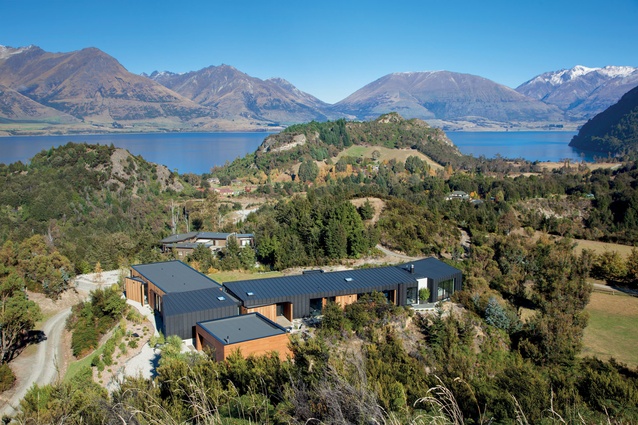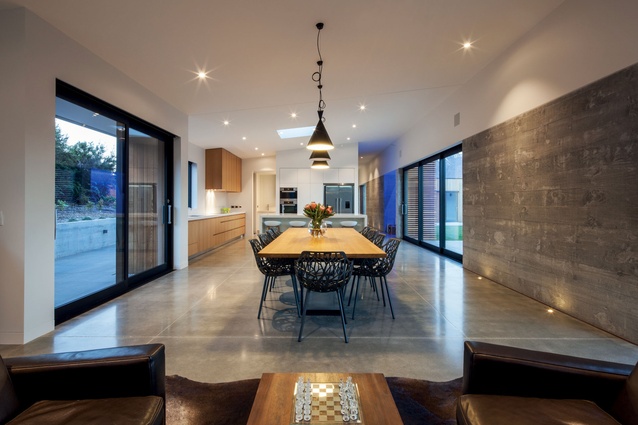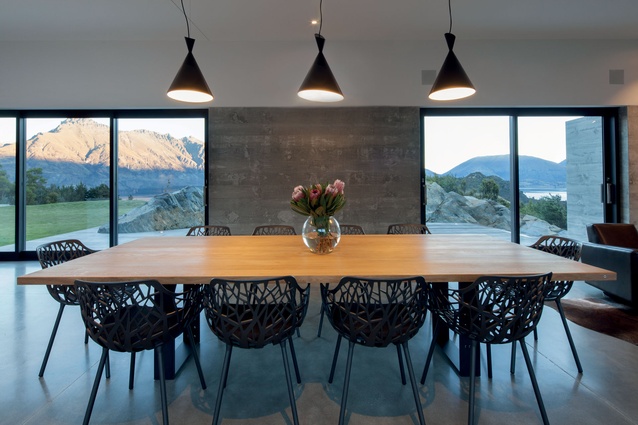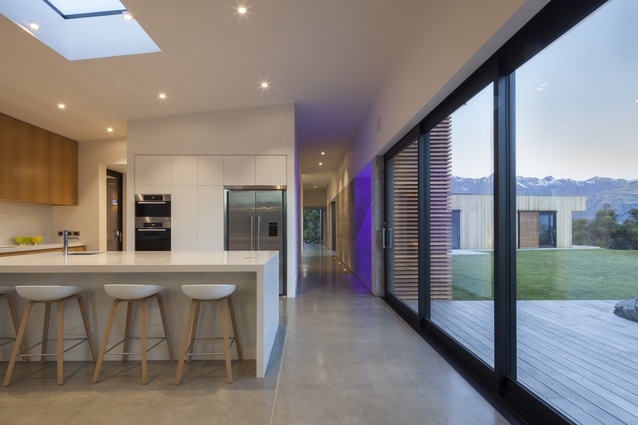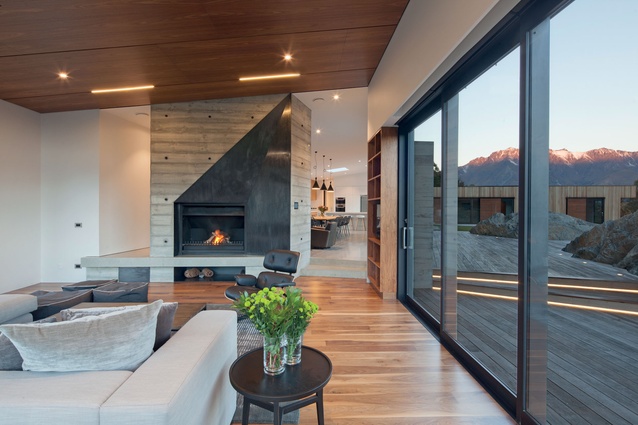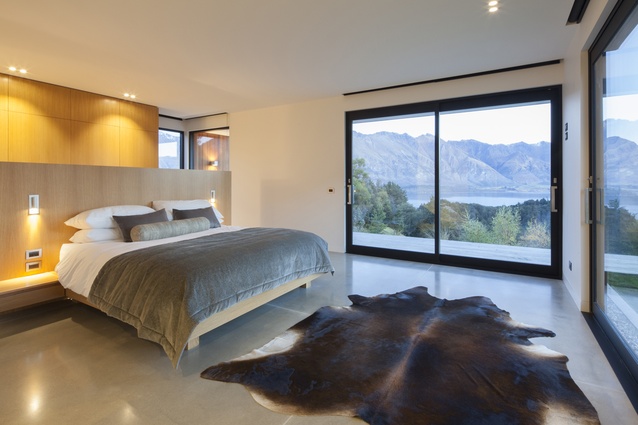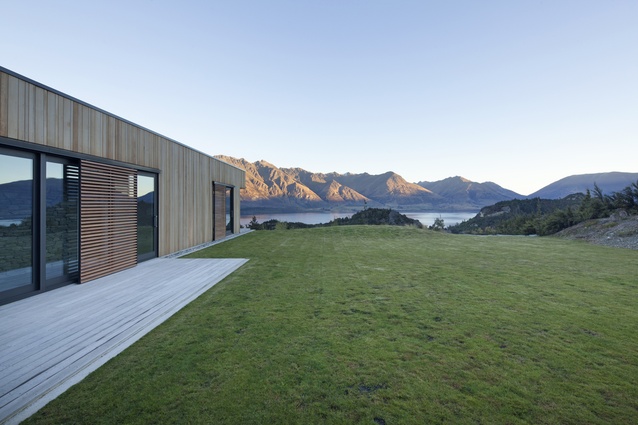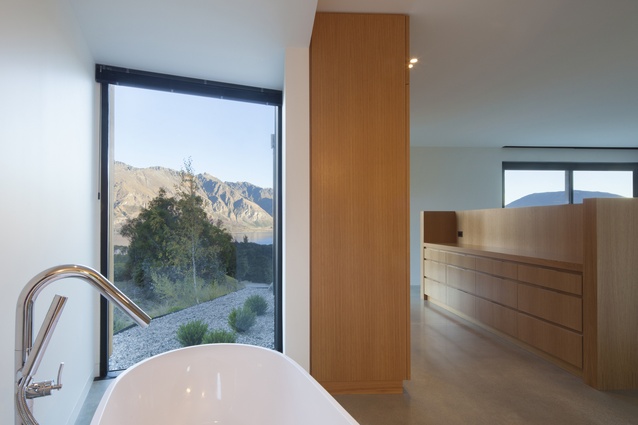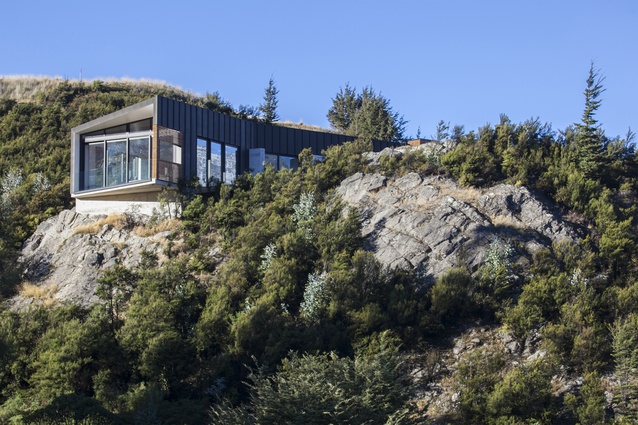Houses revisited: Closeburn Station house
The fractured forms of this house reference the site’s geological past. First published in 2015.
To enjoy life; to be comfortable; to make time for stress-free moments, all this takes a certain amount of hard work and patience. Indeed, hard work came in no small measure in realising this beautiful holiday home in the South Island.
Purchased by a couple living overseas, this high rocky outcrop seemed the ideal setting for restful holidays away from city life. But with the panoramic views of mountains, farm paddocks, native bush and a lake, came a number of challenges. Unbeknownst to the owners the site was almost all bedrock beneath the coarse native bush and space was limited. A design covenant was also in place.
But these factors did not dampen spirits. In fact, Warren and Mahoney architect Ben Hudson saw only the potential. Soon, original plans for a simple bolt-hole design evolved into a full-sized family holiday home with the potential to become the family’s primary residence.
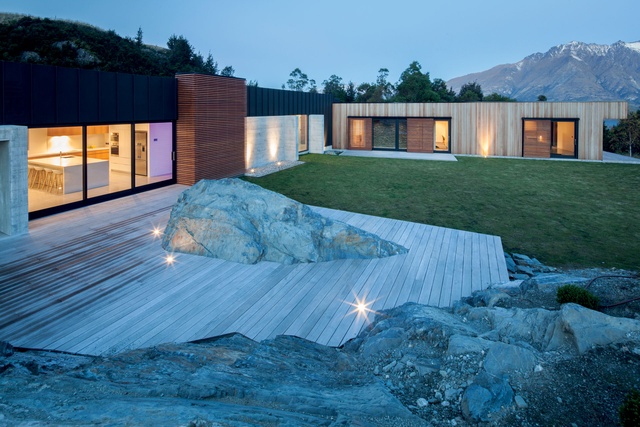
Hudson says he looked at the site’s geo-historical context for inspiration.
“The land has a glacial past and alpine environment, which informed the design as well as the choice of materials. It allowed us to create opportunities out of the challenges.”
“Major geotechnical engineering and excavation was undertaken to create a suitable platform,” he explains.
Rather than obstruct, the boulders and bush now provide a much-needed physical backdrop in which to wedge the built form, settling the home into its surroundings in an otherwise exposed location.
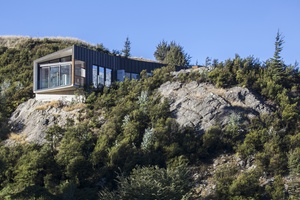
As well as offering some respite from the prevailing winds, Hudson says the house also needed to take in the great views, as well as maximise the benefits of, but also shield, the powerful summer sun.
“Very importantly,” he adds, “it had to include a green lawn for two young children to play on.”
Like a glacier, the mono-pitched angular form seems to carve into the southern aspect, fracturing rock as it moves, hunkering down against the land, undeterred by the limitations of the steep hilltop.
This sense of movement is reinforced by the addition of cantilevered wings, the ends of which jut out over the edge of the ridge as if the very tectonic forces that have shaped the site have pushed them through the bedrock. From inside, the fully clad cantilevers serve to frame individual vignettes of the view, lending them an immediacy that further blurs the connection between the built and natural environments.
Subtle architectural elements such as small shifts and pop-out rooms, which provide privacy and surprise vistas, also add to the sense that this was a contract between the land, its history, the architect and the family’s needs and desires.
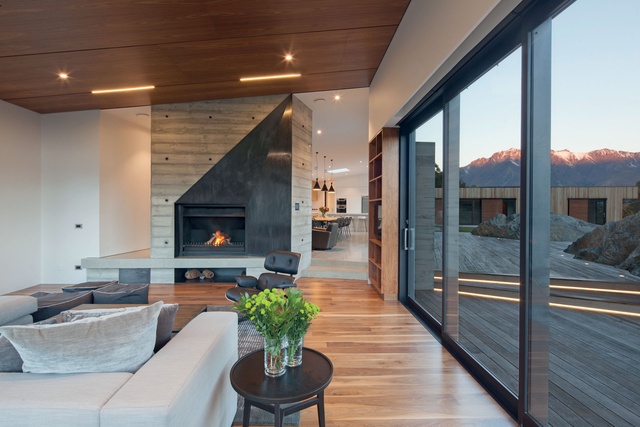
The material palette of cedar cladding, Euro-Tray zinc and concrete not only adds to the theme it also complements the natural surroundings. On the northern aspect, large timber and slate roller doors can be moved to provide shade as necessary. The same materials are repeated inside the home, the various spaces of which are connected by one long continuous corridor sporting a polished concrete floor and off-shuttered concrete wall.
Further touches, such as the off-kilter placement of the pavers leading to the front door and the spliced steel surround on the double-sided fireplace also reference glacial movement.
“It is an honest reflection of the history of the site,” says Hudson.
Everything is detailed and deliberate, chosen not only for its aesthetic appeal and reference to the geo-historical context, but also for its ability to withstand the climactic conditions, as well as the joyful wear and tear of family holidays.
And, flanked by the two wings, is the jewel of the home; a lush green infinity lawn.
Click here to see more Houses Revisited. And sign up to our email newsletters to receive Houses Revisited straight to your inbox.
Note: These are stories from our archives and, since the time of writing, some details may have changed including names, personnel of specific firms, registration status, etc.
—>

